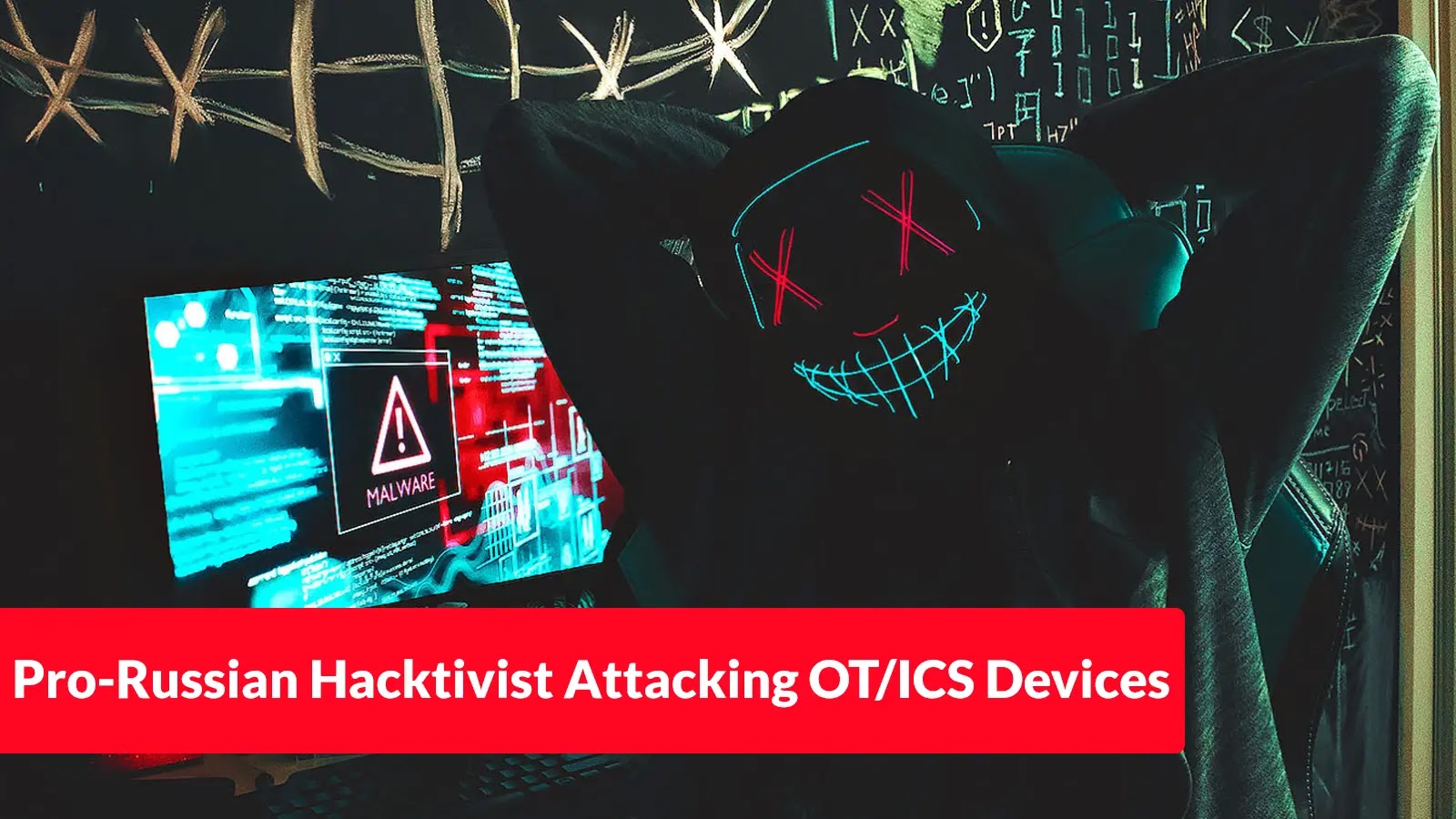
Pro-Russian Hacktivist Attacking OT/ICS Devices to Steal Login Credentials
The New Cyber Frontline: Pro-Russian Hacktivists Target OT/ICS Critical Infrastructure
The digital battlefield is expanding, and a disturbing new front has emerged. Critical infrastructure organizations, the backbone of modern society, are now facing direct and sophisticated threats from pro-Russian hacktivist groups. A newly identified threat actor, TwoNet, has successfully infiltrated Operational Technology (OT) and Industrial Control Systems (ICS), aiming to pilfer login credentials and disrupt vital services. This shift from traditional DDoS attacks to direct OT/ICS exploitation signals a significant escalation in cyber warfare tactics, demanding immediate attention from security professionals.
TwoNet’s Escalating Tactics: Beyond DDoS
For years, hacktivist groups primarily focused on Distributed Denial-of-Service (DDoS) attacks to achieve their goals – causing temporary website outages and public embarrassment. TwoNet, however, represents an evolving breed of these actors. Their activities, as highlighted in recent reports, demonstrate a concerning pivot towards deeper, more disruptive intrusions. By targeting Human-Machine Interfaces (HMIs) and other components within OT/ICS environments, TwoNet is not just aiming to inconvenience; they are actively seeking control and access to the operational core of critical systems.
This move into OT/ICS environments is particularly alarming because these systems often control essential services like power grids, water treatment facilities, transportation networks, and manufacturing operations. A successful breach of such systems can lead to catastrophic physical damage, widespread service disruption, and even endanger human lives.
Understanding the Threat: Why OT/ICS is a Prime Target
OT/ICS environments present unique security challenges that make them attractive targets for sophisticated adversaries like TwoNet. Historically, these systems were air-gapped or operated on isolated networks, providing a false sense of security. However, increasing connectivity for efficiency and remote management has blurred these lines, exposing them to internet-borne threats.
- Legacy Systems: Many OT/ICS environments rely on aging hardware and software that may lack modern security features or receive limited patches.
- Unique Protocols: Industrial protocols (e.g., Modbus, DNP3, OPC UA) are often not designed with robust security in mind, making them vulnerable to exploitation.
- Availability Over Confidentiality: The primary concern in OT is continuous operation (availability), sometimes at the expense of strict security controls and regular patching schedules.
- Limited Visibility: Security teams often have less visibility into OT networks compared to IT networks, making detection and response more challenging.
- Human-Machine Interfaces (HMIs): These control panels are critical points of interaction and, if compromised, can grant direct control over industrial processes. Stealing credentials for these interfaces is a direct path to disruptive access.
Remediation Actions: Fortifying Your OT/ICS Defenses
Protecting critical infrastructure from threats like TwoNet requires a multi-layered and proactive approach. Organizations must prioritize strengthening their OT/ICS cybersecurity posture immediately.
- Network Segmentation and Zoning: Implement strict network segmentation between IT and OT networks, using firewalls and proper demilitarized zones (DMZs). Further segment OT networks into smaller zones based on criticality and function.
- Strong Access Control: Enforce strong authentication mechanisms, including multi-factor authentication (MFA), for all access to OT/ICS systems and HMIs. Implement the principle of least privilege.
- Regular Patch Management: Develop and adhere to a rigorous patch management program for both IT and OT assets, prioritizing critical security updates. While challenging in OT, this is crucial.
- Vulnerability Management: Conduct regular vulnerability assessments and penetration testing specifically targeting OT/ICS environments to identify and remediate weaknesses.
- Monitor for Anomalous Behavior: Deploy specialized OT/ICS security monitoring solutions to detect unusual network traffic, unauthorized access attempts, and abnormal process deviations.
- Incident Response Plan: Develop and regularly test a comprehensive incident response plan tailored to OT/ICS environments, focusing on containment, eradication, and recovery.
- Employee Training: Train all personnel accessing OT/ICS systems on cybersecurity best practices, including phishing awareness and secure password hygiene.
- Secure Remote Access: Implement secure remote access solutions for OT/ICS, utilizing VPNs with strong encryption and strict access controls.
| Tool Name | Purpose | Link |
|---|---|---|
| Claroty Continuous Threat Detection (CTD) | OT/ICS network visibility, threat detection, and vulnerability management. | https://claroty.com/platform/continuous-threat-detection/ |
| Dragos Platform | Industrial cybersecurity solution for threat detection, incident response, and asset visibility. | https://www.dragos.com/platform/ |
| Nozomi Networks Guardian | OT/ICS cybersecurity and operational visibility solution for anomaly detection. | https://www.nozominetworks.com/products/guardian/ |
| Snort | Open-source network intrusion detection system (NIDS) capable of monitoring industrial protocols (with custom rules). | https://www.snort.org/ |
The Evolving Threat Landscape in Critical Infrastructure Protection
The emergence of groups like TwoNet underscores a critical evolution in the cyber threat landscape. Hacktivism, once considered a lower-tier threat, is now demonstrating capabilities that rival state-sponsored actors in its sophistication and potential for disruption. The focus on stealing credentials for HMIs is a direct path to operational control, highlighting a profound shift from mere vandalism to strategic sabotage. This development demands a heightened sense of urgency and sustained investment in robust cybersecurity measures across all critical infrastructure sectors. Protecting these vital systems is no longer just an IT concern; it’s a fundamental issue of national security and public safety.





